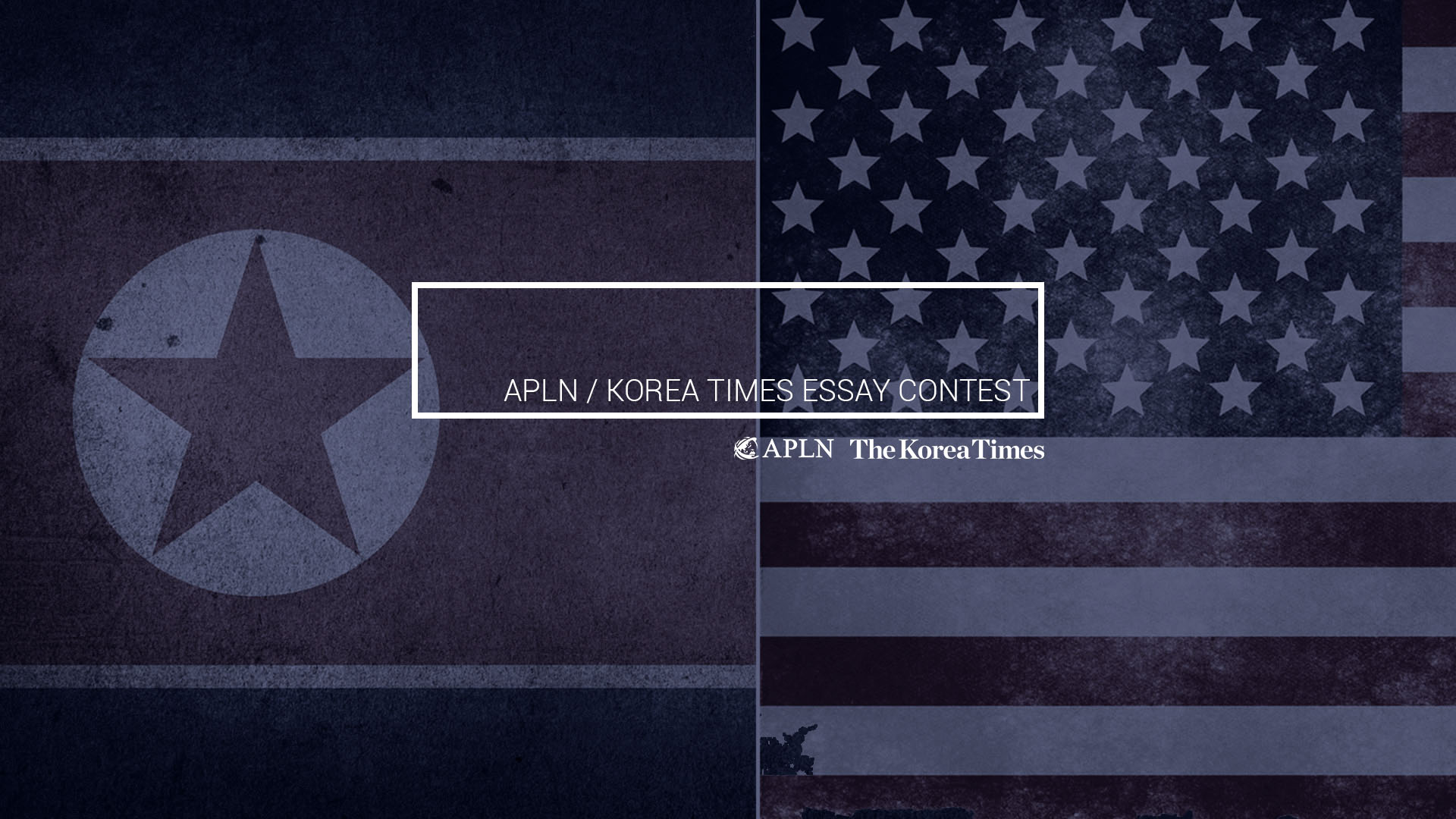The Dangerous Game Between the DPRK and USA
APLN and Korea Times Essay Contest Honorable Mention
The Dangerous Game Between the DPRK and USA
By In-tae JANG
The second North Korea-United States Summit which took place in February, 2019 at Hanoi, Vietnam ended earlier than expected, unfortunately, without producing a deal. Many news agencies and academics analyzed the event as a weakening of denuclearization efforts within the Korean Peninsula. At the current point, with the COVID-19 pandemic wreaking havoc globally and the U.S. Presidential Elections just around the corner, it is uncertain as to when a third North Korea-United States Summit will take place.
The Hanoi Summit was an unsuccessful effort due to the failure in bridging the gap between the stances of the US and North Korea. It is evident that the former prefers a ‘large, comprehensive deal’, characterized by their ‘Complete, Verifiable, Irreversible Dismantling (CVID)’ and ‘Final, Fully Verified Denuclearization (FFVD)’ principles. Meanwhile, the latter prefers a ‘small deal’. Their main demand is that the denuclearization process should proceed under the basis of a gradual implementation process, by setting steps and phases in the process and providing rewards after a certain phase has been completed. However, it is somewhat difficult to fully comprehend why the two countries cannot come to a compromise by considering just this.
To better understand the failure of the Hanoi Summit, and talks of denuclearization within the Korean Peninsula in general, it can be analyzed via the ‘game theory’. The game theory is a theory of strategic interactions between rational decision-makers. Its main claim is that every ‘player’ is rational and their decisions cannot be made independently without considering his or her opponent. Below is a table which summarizes what the denuclearization negotiations look like based on the game theory. It contains the players, their strategies, and payoffs. It should be noted that the numbers corresponding to the payoffs have been randomly selected for convenience and simplicity.
The gist of this analysis is that the DPRK and the US will fail to cooperate due to the structure of the game. If the US decides to cooperate (choose C), they would get a payoff of 1. The DPRK would also have to decide, and looking at the payoffs, they have an incentive to defect (choose D), since the payoff for defecting (2) is larger than that for cooperating (1). So ultimately, the DPRK would choose D, which brings the two countries to the payoff of (-1, 2). However, this would not be the best payoff in terms of value for the US. If the US chooses to defect, they would get a payoff of 0, which is larger than -1. Thus, they would do so and the final payoff would be (0, 0), becoming a Nash Equilibrium, a state in the game where there is no incentive for any player to defect. The overall outcome of the game would be the same even if we started the game from the DPRK.
The findings from the game mentioned above are indeed a grim outcome. Is there truly no room for cooperation, therefore rendering the goal of the denuclearization of the Korean Peninsula-and ultimately any chance of peace and reunification-an impossible one to achieve?
Fortunately, this is not the case. According to game theory experts, there are several ways that cooperation can be facilitated between players in the game: internalized values, intervention, implementation and enforcement of the agreement by a third party, and enlarging the penalties and/or rewards given to each player. The first is by using internalized values. These are norms and standards which emphasize morality, such as helping others. By utilizing internalized values, parties can cooperate and come to an agreement even without the help of institutions and third parties. In the nuclear negotiations between the DPRK and US, trust would be an example of internalized values.
Moving on, third party enforcement is also a viable option. A third party would monitor the agreement reached by the US and the DPRK, and ensure its effective implementation. This means that a system to facilitate the nuclear negotiation and monitor the progress of implementation is necessary. In the case of Northeast Asia, there are the 6 Party Talks.
The third alternative is aggrandizing penalties and/or rewards given to each player in the game. Theoretically, this would ultimately prevent the defection of any player and foster cooperation by changing their payoffs. In the nuclear negotiations between the DPRK and US, they could discuss imposing additional penalties (e.g. heavier sanctions) should one show uncooperative behavior, and/or providing additional rewards and benefits (e.g. financial aid) for cooperative behavior.
It is also noteworthy to mention that an equal amount of focus should be put on the role of South Korea (Republic of Korea, ROK), since they are also a key stakeholder in the denuclearization of the Korean Peninsula. South Korea could become a mediator in future nuclear negotiations between the US and DPRK, and help each other build trust towards one another. A lack of trust between the two is a clear obstacle which must be overcome for even the slightest possibility of an agreement to be visualized. By acting as a mediator, the ROK could help the two change their perceptions about their opponent and help them reach a compromise. Another course of action the ROK could take is by strengthening diplomatic ties with China. This means South Korea would persuade and incentivize China to coerce the DPRK and make them negotiate with the US, as they are another key stakeholder regarding the issue of the denuclearization of the Korean Peninsula.
Getting back to the aforementioned question about the possibility for cooperation, no one can tell. The shadow of the future shrouds everything in uncertainty. Currently, we can only hope that the solutions mentioned above could be a candle in the dark and bring an end to the dangerous game being played by North Korea and the US.

